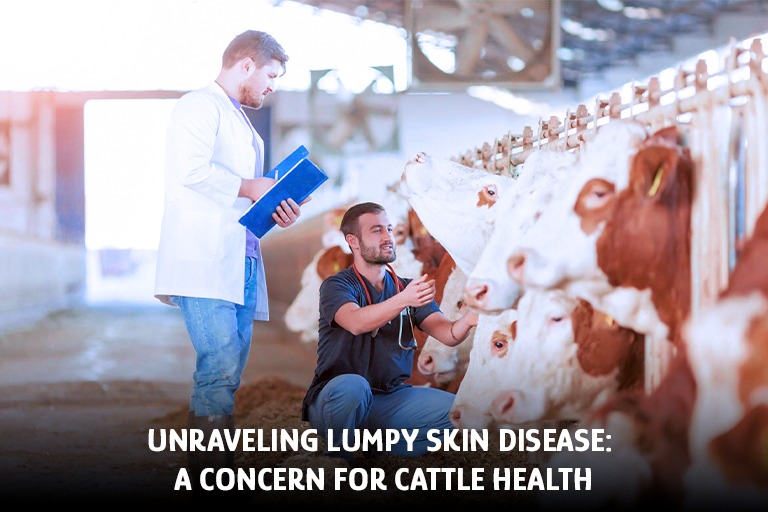The welfare of livestock holds immense importance for global agriculture and economies. Nonetheless, the emergence of diverse diseases can present notable obstacles to animal well-being and the sectors dependent on them. One such concern is the presence of Lumpy Skin Disease (LSD) in cattle populations. This article delves into the intricacies of LSD, its impact, and the efforts being made to tackle this disease.
Understanding Lumpy Skin Disease
Lumpy Skin Disease, caused by the Capripoxvirus, is a viral illness primarily affecting cattle. Named for the characteristic skin nodules it causes, LSD poses a dual threat: it directly affects the animal’s health and has economic implications due to trade restrictions on affected regions.
Symptoms and Progression
The hallmark of LSD is the development of nodules or lumps on the skin, hence its name. These nodules can vary in size and are often painful, leading to discomfort for the affected cattle. Additional signs could encompass elevated body temperature, discharge from the nasal passages, and ocular discharge. As the ailment advances, it has the potential to result in diminished milk output, a decline in body weight, and in severe instances, even mortality.
Transmission and Spread
LSD spreads primarily through direct contact with infected animals or contaminated objects. Insects, particularly mosquitoes and ticks, can also act as vectors, further facilitating the disease’s transmission. The ease with which the virus spreads demands vigilant biosecurity measures to prevent its propagation.

Read more.. Top 10 Animal Health Tips Every Pet Owner Should Know
Impact on Agriculture and Trade
The implications of LSD extend beyond animal health. Infected cattle are often subjected to quarantine measures, affecting trade and livestock movement. Regions grappling with LSD outbreaks can experience economic setbacks due to reduced exports and increased costs associated with disease control and animal welfare.

Read more.. Going with Pets: Tips for a Pet-Accommodating Excursion
Control Measures
Efforts to control and prevent LSD outbreaks are multi-faceted. Vaccination plays a crucial role in managing the disease’s spread, and its deployment has been effective in curbing LSD’s impact. Furthermore, strict biosecurity protocols, vector control measures, and timely reporting of outbreaks contribute to containing the virus.
Global Collaborations and Research
Addressing LSD is a global endeavor. Veterinary authorities, researchers, and international organizations collaborate to exchange information, share best practices, and develop effective control strategies. This concerted effort underscores the importance of a united approach to combatting emerging livestock diseases.
Conclusion: Preserving Animal Welfare and Industry
Lumpy Skin Disease is a reminder of the intricate balance between animal health, trade, and economies. As the agricultural landscape evolves, the focus on preventing and managing diseases like LSD remains crucial. By fostering collaboration, investing in research, and implementing robust control measures, the global community can safeguard cattle populations, ensure food security, and protect the livelihoods of those reliant on a healthy livestock industry.
Read more.. Navigating Eye Health: Exploring Viral Conjunctivitis and Associated Conditions




